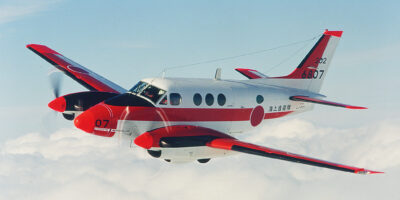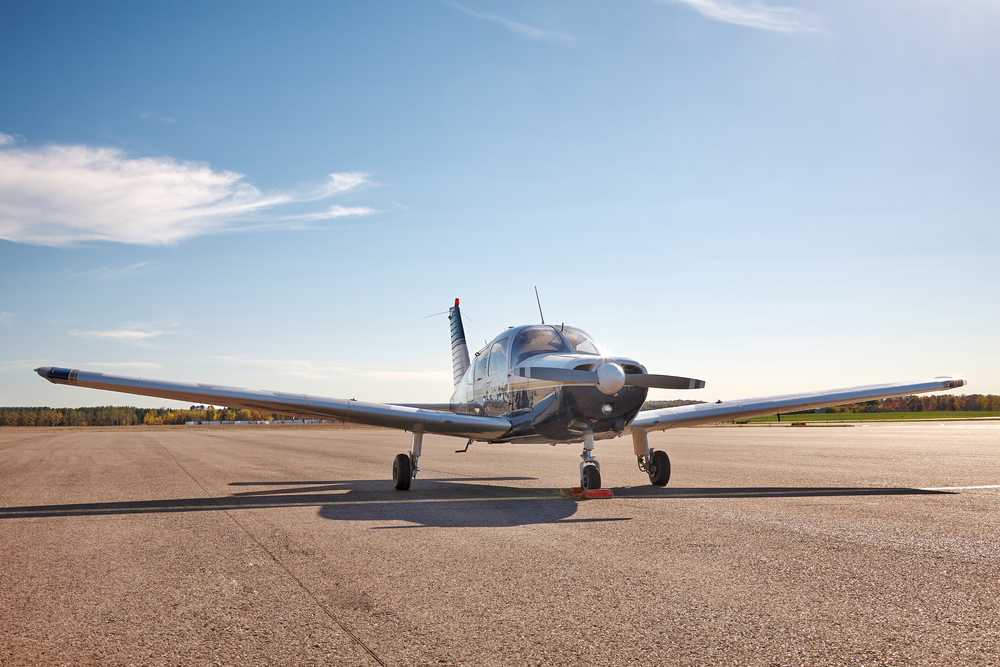The Cessna 210 Centurion dominated high-performance single-engine flying from 1960 through 1986. This retractable-gear workhorse combined speed, useful load, and six-seat capacity in ways few singles could match. Thousands of 210s still fly worldwide, serving everything from business travel to cargo hauling. Understanding its capabilities and quirks helps pilots decide if this classic belongs in their hangar.
Quick Answer: The Cessna 210 cruises at 165-185 knots depending on model, powered by 285-310 hp Continental IO-520 or IO-550 engines. Useful load ranges from 1,400-1,600 pounds with 90-gallon fuel capacity. The retractable gear, constant-speed prop, and turbocharging (on some models) provide true cross-country performance. Prices run $75,000-$200,000 for non-turbocharged models, $150,000-$350,000 for turbos. Expect $200-$300/hour operating costs.
Performance Across the Model Years
Early 210s (1960-1970) with 260-285 hp engines cruise at 160-170 knots. Later models (1970-1986) with 285-310 hp Continental engines reach 175-185 knots. Turbocharged variants cruise at 200+ knots at altitude. All models climb over 1,000 feet per minute at gross weight. Service ceiling reaches 17,000-27,000 feet depending on turbocharging.
Takeoff distance requires 1,100-1,400 feet depending on model and conditions. Landing distance needs 1,500-1,800 feet. The excellent useful load of 1,400-1,600 pounds allows full fuel and four adults with baggage. Range exceeds 900 nautical miles with reserves. These capabilities made the 210 popular for business aviation and personal transportation across long distances.
The Retractable Gear System
The 210’s retractable landing gear reduces drag significantly compared to fixed-gear aircraft. However, the gear system evolved through multiple designs with varying reliability. Early models used mechanical overcenter mechanisms that were simple but maintenance-intensive. Later models adopted hydraulic systems that were smoother but introduced potential leak issues.
The gear-up warning horn activates with throttle below a set point and gear retracted. Pilots must verify three green lights indicating gear down and locked before landing. Emergency gear extension uses either hand-cranking or pneumatic backup depending on model year. Annual gear maintenance costs $1,500-$3,000. Gear-related ADs must be complied with carefully—several address safety concerns.
Engine Options and Reliability
The Continental IO-520 engine (285 hp) powers most 210s. This six-cylinder powerplant provides smooth operation and adequate performance. TBO is 1,700 hours with overhauls costing $40,000-$50,000. Some later models use the IO-550 (310 hp) offering better performance and efficiency. The IO-550 has a 2,000-hour TBO.
Turbocharged models use TSIO-520 engines requiring more careful operation. Turbo engines demand strict temperature management and gradual cooling. Turbocharger components add $10,000-$15,000 to overhaul costs. However, the performance gains at altitude—cruising at 20,000+ feet above weather—appeal to serious cross-country pilots. Non-turbo models are simpler and cheaper to maintain.
Fuel System Considerations
The 210 carries 90 gallons of usable fuel in wing tanks (later models had optional long-range tanks with 120 gallons). Fuel burn runs 15-17 gallons per hour in cruise at 65-75% power. The fuel system uses a selector with Left, Right, and Both positions. Proper fuel management prevents imbalances affecting trim.
Electric fuel pumps provide backup to the engine-driven mechanical pump. The fuel injection system eliminates carburetor ice concerns but requires priming technique mastery for starting. Hot starts can be challenging—flooding is common. Fuel system maintenance includes checking bladder-type fuel tanks for leaks and deterioration.
Cabin Space and Comfort
The 210’s cabin measures 44 inches wide with 48 inches of headroom. Six seats accommodate families or business groups. The front seats adjust fore and aft with recline capability. Middle-row seats (seats 3 and 4) are comfortable for adults on flights under three hours. The rear bench (seats 5 and 6) suits children or extra baggage better than adults.
Large windows provide excellent visibility. The high wing offers good downward views. Baggage compartment capacity reaches 200 pounds behind the rear seats. The spacious cabin and large useful load make the 210 ideal for family trips with gear. Environmental control systems vary by model—later aircraft have better heating and cooling.
Handling and Flight Characteristics
The 210 flies like a heavier, faster Cessna 182. Control forces are moderate—not heavy but requiring positive inputs. The aircraft is stable in cruise and handles turbulence well. The strut-braced high wing provides excellent stability. Approach speeds run 75-85 knots depending on weight.
Landing requires careful speed control—the clean airframe floats if too fast. The spring-steel gear absorbs hard landings reasonably well. Stall characteristics are gentle with adequate warning. The constant-speed propeller requires coordination during power changes. Pilots transitioning from fixed-gear aircraft need 10-15 hours to master the systems and faster speeds.
Maintenance and Ownership Costs
Annual inspections cost $3,000-$5,000 for thorough examinations. The retractable gear adds $1,500-$3,000 annually. Engine reserves should be $20-$25 per hour for eventual overhaul. Insurance runs $2,000-$4,000 depending on pilot experience and hull value. Hangar costs vary by location but protect the investment better than tiedowns.
Operating costs total $200-$300 per hour including fuel, maintenance, insurance, and reserves. Higher for turbocharged models due to engine complexity. Parts availability is excellent due to the large fleet. Most A&P mechanics have 210 experience. However, some shops avoid 210 gear work—find maintenance facilities familiar with the model before purchasing.
Known Issues and ADs
Several Airworthiness Directives affect the 210 fleet. Crankshaft gear ADs require inspections and potential replacement. Landing gear ADs address safety concerns in various models. Exhaust system ADs mandate regular inspections. Engine mount ADs require careful examination. Verify all ADs are complied with during pre-buy inspection.
Fuel bladder leaks are common in older aircraft—replacement costs $8,000-$12,000 per tank. Corrosion in wing structures requires inspection, especially in aircraft operated in coastal environments. The carry-through spar needs careful examination. Cowl flaps wear and require periodic replacement. Budget $5,000-$10,000 annually for unexpected maintenance beyond routine items.
Is the 210 Right for You?
The 210 excels at missions requiring speed, useful load, and range. Pilots flying 200+ hours annually across 300-600 mile routes benefit most. The aircraft hauls family and baggage efficiently. Business operators appreciate the professional appearance and capability. However, maintenance costs exceed simpler aircraft like the Cessna 182.
Pilots must stay proficient with the retractable gear and complex systems. Insurance often requires instrument ratings and significant time. The 210 rewards knowledgeable owners with reliable, efficient transportation. Find a pre-buy inspector experienced with 210s—the gear system and engine require expert evaluation. Join the Cessna Pilots Association for support, advice, and access to knowledgeable mechanics. The 210 remains a capable cross-country machine decades after production ended.
Join the Aircraft Insider Community
Get exclusive backcountry flying tips, aircraft reviews, and Western aviation destinations delivered to your inbox.
✈️ No spam, ever. Unsubscribe anytime. Privacy respected.




Leave a Reply